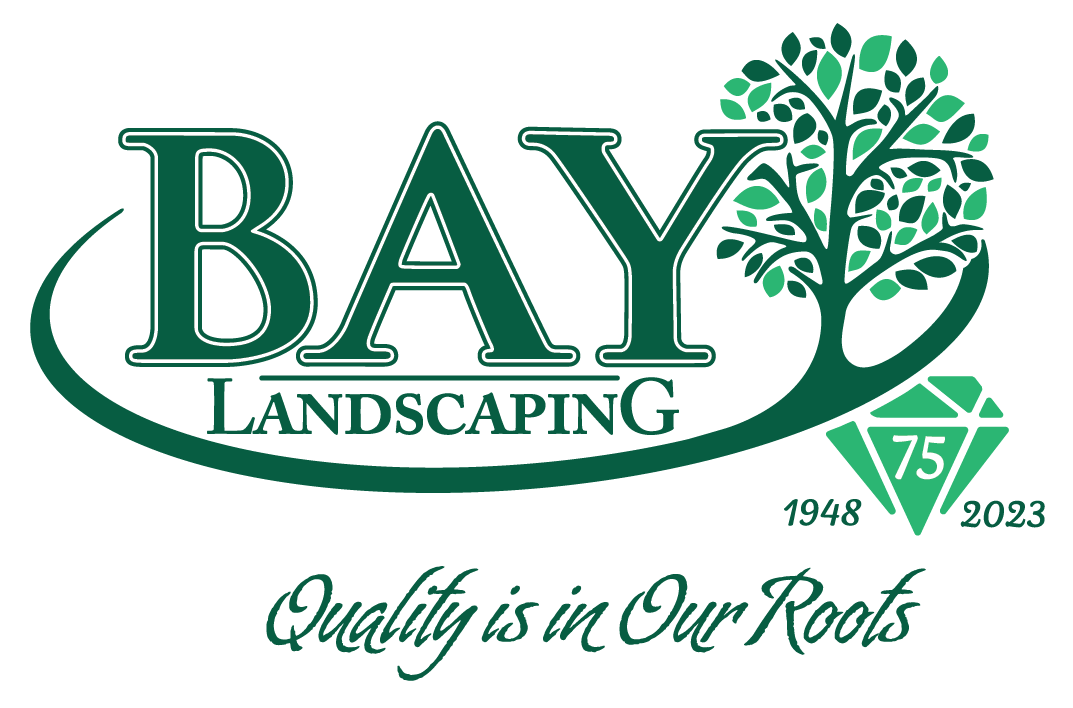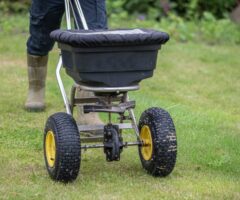The most common way to prevent outdoor surfaces from becoming slippery during Michigan’s long, cold winters is to use salt or ice melt products. Unfortunately, these products can damage or even kill nearby plants, including mature trees. In this article, we share ways to keep your walkways and driveway clear while avoiding salt damage to plants.
What’s wrong with using de-icing products?
The last thing any of us want during winter is an icy, slippery front walk or driveway—it’s an accident waiting to happen. And in the midst of winter, you might not be thinking of your landscape plants when you melt that ice—but you should.
De-icing products may not harm your plants if they’re:
- used in limited quantities,
- carefully applied, and
- thoroughly flushed from the soil after winter ends.
But, in reality, we often see excessive use of road salt and ice-melt products. Combined with overspray and runoff from the melted sleet and snow, this results in:
- dead and damaged landscapes (especially those adjacent to roadways),
- overly saline soil that stunts plant growth,
- saline runoff that contaminates freshwater, and
- corroded surfaces (including hardscape surfaces that haven’t been recently or properly sealed).

Which ice melting products harm plants?
The products most commonly used to melt winter ice include:
- calcium chloride,
- magnesium chloride,
- potassium chloride, and
- sodium chloride (table salt).
The common thread here is chloride, from chlorine (a chemical element that’s a called a halogen, or “salt-producer”) and salt (this is what damages your plants and trees).
High levels of salts in soil and plant foliage are toxic. This has been known for centuries; salting agricultural fields was a common practice of victorious armies to punish their enemies by poisoning their food sources.
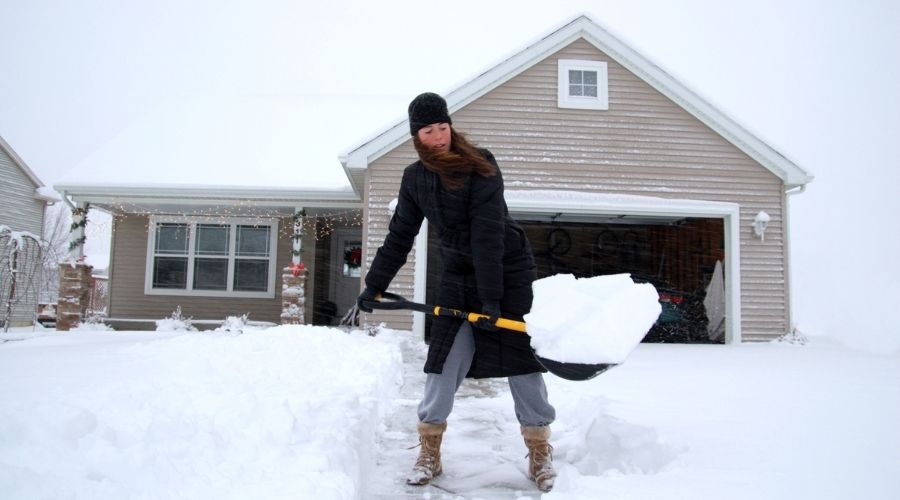
How does salt damage plants and what does it look like?
You’ll see dead plant tissue that’s brown, stunted, curled, or drooping. These symptoms are the results of foliage nutrient deficiency and desiccation caused by sodium in the soil (and, therefore, in the water plants absorb from the soil).
You may also notice plant damage from road salt spray. Salt spray scorches leaves and buds and can eliminate their cold hardiness, causing further winter damage (freeze damage will look similar to salt damage). Often, you will see dead and damaged leaves only on the portions of a plant that are splashed by passing vehicles.
What are alternatives to road salt and ice melt products?
There are two things you can use to prevent icy surfaces without using damaging salt. They are:
- Coarse sand. This isn’t smooth play sand but a mix of more jagged and irregular sand grains. These irregularities are tiny and won’t hurt you, but the irregular grains are better at gripping icy surfaces and providing traction. You should evenly scatter coarse sand over your packed snow and ice; reapply it whenever snow or sleet creates more ice atop the sand. With rain and melting ice, sand particles will wash into nearby planting areas where they do no damage. Or you can simply sweep up any sand that is left on your walks or driveway.
- Calcium magnesium acetate (CMA). This deicer has been used since the 1970s. It contains no damaging salts but relies on the ingredients’ ability to stop snow and ice particles from bonding to each other and to pavement surfaces. CMA stays on surfaces and doesn’t run off as brine-like road salt. As a result, each application lasts longer, both during a snowstorm or freezing rain event and after. The corrosive properties of CMA are comparable with freshwater.
Why haven’t these methods replaced road salt and other deicing products?
We might want to blame the sodium-industrial complex, but it’s most likely down to cost. Road salt is cheap.
What isn’t factored into its low price, however, is the cost of repairing or replacing what is damaged or destroyed by salt corrosion. As well as damaging roads, sidewalks, median strips, waterways, lawns, trees, shrubs, and retaining walls, road salt also corrodes vehicles, and even your shoes.
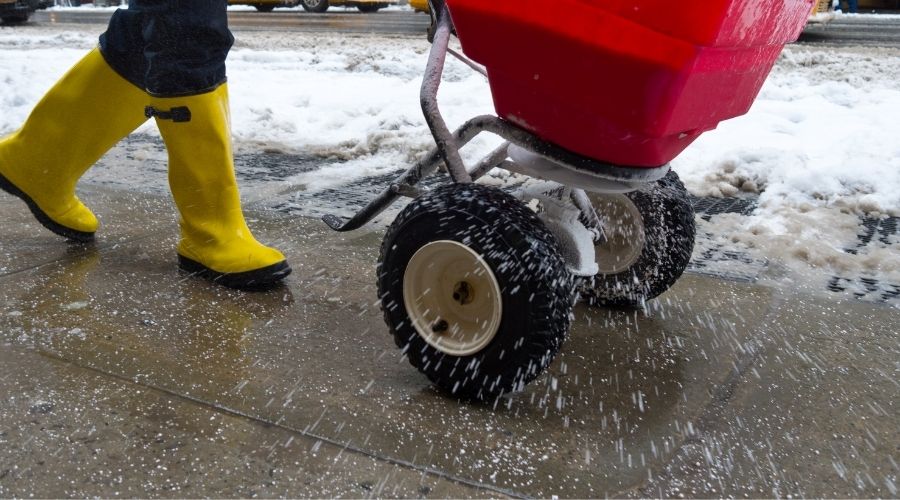
Are there ways to avoid using salt while still keeping people safe from slipping?
One thing Michigan doesn’t lack during winter is snow. Sometimes during the winter, it feels like snow won’t ever stop falling from the sky. And all the snow that builds up on roads, sidewalks, driveways, roofs, vehicles, and stairs needs to be removed.
The easiest way to get ahead of snow build-up is to shovel regularly. After a few inches of snow collects, it should be shoveled off. When a few more inches pile up, shovel again. Unfortunately for procrastinators, starting early and keeping up is still the best way to get through tasks!
This is especially important where guests or pedestrians enter and exit. While a little snow build-up is okay, paths can quickly become hard to navigate. You’ll want to avoid having people climb over drifts! And you won’t want foot traffic to compress layer after layer of snow underfoot and create a slippery, frozen layer hidden beneath a dusting of fresh snow.
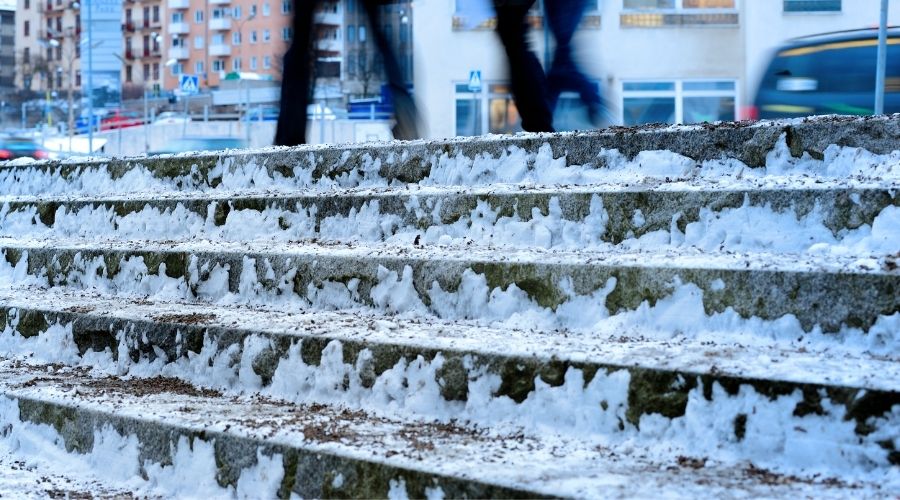
What if you have a whole lot of snow?
The best thing when expecting a heavy snowfall is to have a plan, especially if repeated shoveling, plowing, or blowing snow is in your future.
Here’s what we recommend doing:
- Keep main circulation routes clear, including your front walkway and drive. For commercial properties, this would include emergency vehicle routes and red curb areas.
- Designate convenient places as snow-receiving areas. If snow banks adjacent to roads or sidewalks grow too large, you’ll need somewhere to put all that snow. And, since snow from roads is likely to contain salt, make sure you keep those snowbanks away from valuable plants.
- Keep pedestrians in mind and ensure that they don’t have to climb over snow piles or walk-in vehicle lanes to reach their destination. Even good drivers have less control over their vehicles in winter weather.
- Keep ahead of snow pile-up if possible. It’s easier to move smaller quantities of snow several times than deal with a large build-up of snow (even with a snowblower).
- Know your hardscape so you’ll know where shovels, plows, or blowers should go, and where surface materials might be damaged by any of these tools. For example, don’t use a snow blower on a gravel pathway or you may end up breaking your neighbor’s windows with gravel projectiles!
- And, of course, wrap tender or valuable plants in burlap for winter protection from salt spray.
Keep Your Plants Healthy & Avoid Salt Damage
If you suspect that some of your landscape plants have been damaged by winter salt or de-icers, or if you’d like to protect them from potential damage this winter, give us a call. Our horticulturists can help you develop a plan to protect your plants, diagnose salt damage, and recommend ways to help damaged plants recover.
